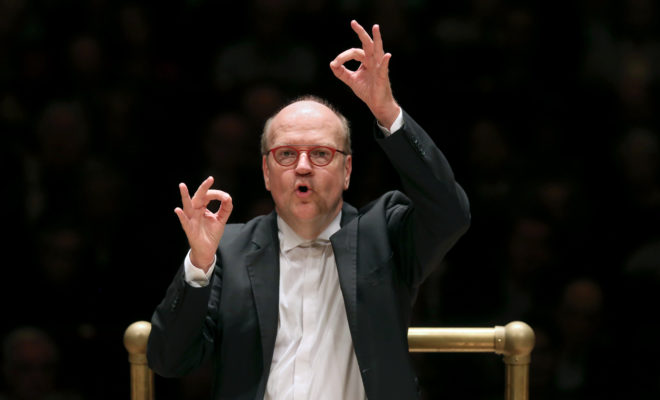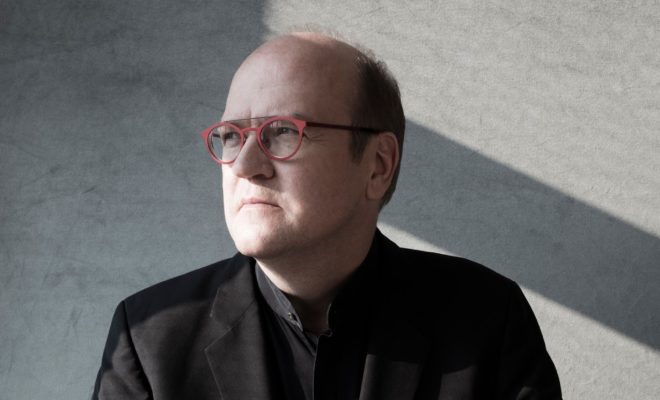Although we previously discussed, at length, the progress of the Historically Informed Performance (HIP) movement from the pioneering days of the 1970s, there is one period instrument we haven’t discussed: the human voice. (I mean, other than Max van Egmond’s.)
Beyond the use of period instruments, one of the great novelties of the Bach Telefunken recordings (oratorios and cantatas) involving Nikolaus Harnoncourt and Gustav Leonhardt was the use of boys’ voices for soprano and alto parts, either chorally or as soloists. In the perspective of recreating as faithfully as possible the original sound of Bach’s music, it was an obvious choice: we know that only boys and men were allowed to sing in churches in Bach’s time.
The tradition of great boys’ choirs has been kept alive and nurtured to a very high degree in certain countries over the centuries, notably in Great Britain, Germany and Austria. Harnoncourt, who was active in Vienna, naturally turned to the Wiener Sängerknaben for his first recordings, moving later to the Tölzer Knabenchor and the Knabenchor Hannover.
This interpretative choice, firmly supported by musicological evidence, was also one of the most controversial aspects of these recordings. With boys’ choir, nature dictates that quality will vary over time as voices break and older singers are replaced by younger ones on a yearly basis. There are good and not quite good ‘vintages’, so to speak, and this reality can be heard clearly on the Harnoncourt and Leonhardt recordings over the years.
Let me be clear here: I loooove the sound of boys’ choirs. I cannot imagine Christmas without the sound of a boys’ choir. I never miss Evensong when I visit London or Cambridge. I am discussing here the specific challenges of Bach’s music performed by boys’ choirs.
In 1970 as well as today, the extreme difficulty of Bach’s writing for voices puts a huge burden on the shoulders of young boys asked to sing solo soprano or alto parts in his church cantatas and oratorios. After just a few years of recording, Harnoncourt himself abandoned boys’ voices for solo alto and resorted to using a countertenor (enter the indispensable Paul Esswood) which was a huge historical compromise: to our knowledge, Bach never used falsetto or men’s voices for alto parts in his church music. For solo soprano though, there was no alternative, and both Harnoncourt and Leonhardt stuck to using boys throughout the complete recording of the cantatas. This produced mixed results. A large number of these recordings include passable singers, an annoying number include really bad ones, and once in a while these feature exceptional young singers.
Over the years, the inconsistent quality generated a lot of negative comments and opinions. The combination of singing by technically overwhelmed young boys and rather rustic period instrument playing of the early years has done a lot to fuel significant resistance to the performance practice movement amongst ‘non-believers’.
Moreover, this situation has produced its lot of preconceived opinions about Bach’s music in the era of performance practice. Statements like, “Bach’s music is already so difficult on modern instruments, imagine on old ones!” or, “Can you imagine how bad it must have sounded in Leipzig on certain Sunday mornings when these kids were sight-reading this music?” and the perennial,“Performance standards were not the same back then.” (The subtext here is that we are doing so much better nowadays.) The list goes on and on, and we have heard comments of this nature for years.
Here are a few clarifications:
- First things first: Bach’s music indeed tends to be very difficult. It was then and it is now. We know that Bach was not happy with the level of performance available to him during his tenure in Leipzig. He has written extensively about it in his famous 1730 memorandum to the city council in which he laments the lack of a sufficient number of performers and the quality of the ones available to him.
- Second: Although Bach was obviously extremely demanding for others as well as for himself, he was not writing “theoretical” music that could not be performed well by competent musicians of his time. (This situation probably applies more to Beethoven’s late works, whose immense technical difficulties might have something to do with the composer’s deafness and his lack of connection with realities of musicians performing his music.)
- Bach was an exceptional keyboard player and probably a very good violinist and violist. He was known to have possessed a very good soprano voice as a young boy, and he knew everything about the instruments for which he was writing. He was keen to use any new instrument coming his way, as shown for instance by the many cantatas featuring the oboe da caccia composed immediately after his move to Leipzig. The oboe da caccia was invented by Johann Heinrich Eichentopf, a woodwind instrument maker who was active in Leipzig when Bach moved there.
- Third, regarding boy singers, one very important reality must be factored in: puberty used to happen much later in the 18th century than it does today. Haydn’s reportedly exquisite soprano voice broke when he was 16. In comparison to our current times, boys back then had an extra two or three years to develop both their vocal instrument and their musical skills, which is a lot of time considering how fast young people develop on every level at that age. This is the kind of voice Bach had in mind when he was composing extremely demanding soprano and alto arias.
- In my opinion this last aspect reigns supreme: finding boy soloists today who are capable of meeting the excruciatingly high standards of Bach’s writing in solo vocal works is quite a challenge, albeit not an impossible one. When it happens, it is a rare feat that must be celebrated accordingly. Otherwise, I personally prefer to engage women who are better equipped to meet these challenges.
This is all to explain why the recorded excerpt features a female soprano singing one of Bach’s most beautiful arias accompanied by a very small group of period instruments. When you hear it, I think you will agree that we have come a long way since the 70s.
St. Matthew Passion
If you have followed along with our articles on Bach, you will not be surprised if I tell you that there is a pyramid hidden somewhere in the St. Matthew Passion. (A pyramid structure can also be found in BWV 106.)
The pyramid concept does not apply to the whole structure though. The piece was intended to be performed in two blocks (before and after the sermon), which would have broken the overall architecture. The pyramid is embedded in the second part, and its apex coincides with the aria I have chosen for you: Aus Liebe will mein Heiland sterben. At the crux of the mystery of death and resurrection, Bach carves a keystone out of crystal.
It is lonely at the top of that pyramid: Bach uses only a solo soprano voice with a plaintive flute and two oboes da caccia tolling some imaginary funeral bells in the distance. No bass line, nor continuo is provided. Bach relies here on the bare bones of ultimate musical expression.
The text reflects on the sacrifice of the Lamb of God which lies at the very heart of the mystery of the Passion:
|
Out of love my Saviour is willing to die, |
|
Of any sin he knows nothing, |
|
So that eternal ruin |
|
And the punishment of judgement |
|
May not remain upon my soul. |
There is not much more I want to add on this masterpiece. No words can describe its greatness and its uncanny capacity to pierce our soul while showing such restraint. Truly, less is more in the world of Bach.











